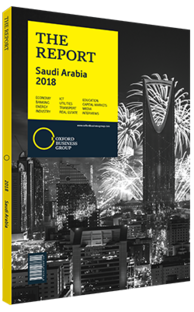Thamer Al Sharhan, Managing Director, ACWA Power: Interview

Interview: Thamer Al Sharhan
What role will renewable energy play in Saudi Arabia’s energy mix in the near future?
THAMER AL SHARHAN: There is a renewed sense of optimism surrounding renewable energy in Saudi Arabia. The recent bids launched in the Kingdom for solar photovoltaic (PV) and wind power projects indicate a clear ambition to reach 9.5 GW of renewable energy capacity by 2023, which will then represent a little over 10% of total generation capacity. Achieving this would reflect the ability of renewable energy to serve our end users in a cost effective and efficient way, while reducing the overall carbon footprint of the energy mix going forward.
As the Kingdom advances with its renewables programme, the cost of such provision is expected to decrease in response to continuing technological advances, innovation in construction methods and more participants in the supply chain. The country will see the value proposition presented by renewable resources. It can also be expected that we will seek to build more capacity in the coming years. It is perfectly plausible that the Kingdom will further increase the renewable energy content in the overall mix, possibly reaching levels of 40-50% of total power generation capacity by 2030.
How is the Kingdom looking to develop various sources of renewable energy?
AL SHARHAN: Saudi Arabia is blessed with many renewable resources, from solar and wind to geothermal and waste. In the long term, all of these methods should be on the table; however, solar PV and wind farms are a perfect start. There is a lot of scope for both of these resources, especially given the demand profile of the grid, their cost competitiveness and the solar peak, which is in tandem with the sunrise and demand on the grid.
There are other proven technologies also available for dispatchable power generation, such as concentrated solar power. This too holds a lot of potential as we successfully continue to reduce the cost of this technology. If we look even further down the road, the fault line deep below the earth’s surface running from Kenya to Turkey and traversing Saudi Arabia along its western coast is a valuable geothermal resource, which produces a considerable amount of hot water and steam. This could also be captured and used to generate electricity.
What scope is there for privatisation in the energy sector, and what is needed to enable this?
AL SHARHAN: The Kingdom has already been working with the private sector on power generation, as well as on water desalination and cogeneration projects. Working with private actors is a proven method for developing and transforming the sector along competitive lines to ensure that the end consumer gets reliable services at the lowest possible cost. All of this can be done without the involvement of direct government investment.
All we need is the political will, which is very much there, and a regulatory framework that can guide us through the competitive electricity market. We also need to ensure investors earn a reasonable return on their investment by improving efficiency and competition. This is like performing open heart surgery in the sense that service provision cannot be stopped – even for a second.
To what extent do you think the renewable energy value chain can be localised?
AL SHARHAN: There is a lot of potential for localisation. Within five years and with a stable pipeline of procurement, over 90% of the content at a solar PV plant can be locally manufactured. The same can be said for operation and maintenance, thus offering significant added value to the domestic economy, as well as employment opportunities for Saudis.
You have reached the limit of premium articles you can view for free.
Choose from the options below to purchase print or digital editions of our Reports. You can also purchase a website subscription giving you unlimited access to all of our Reports online for 12 months.
If you have already purchased this Report or have a website subscription, please login to continue.

